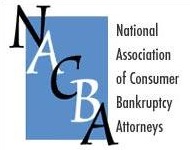 What’s a Chapter 13 pot plan, you ask.
What’s a Chapter 13 pot plan, you ask.
Not one drafted while under the influence, for sure.
A “pot plan” is the contrast to a “percentage plan“.
They are alternative ways to summarize the measure of what the debtor in a Chapter 13 plan proposes to pay into the plan.
A percentage plan reads something like this: allowed unsecured claims shall receive 20% of their claim.
The allowed general unsecured claims get a predetermined fraction of their claim. It’s hard for anyone to know with precision how much money that will take.
Some creditors may not file proofs of claim. Others may file claims in wildly different amounts from the amount the debtor scheduled.
Pot Plans
The alternative way to describe the treatment of unsecureds is a pot plan. The debtor’s obligation is to pay into the plan to create a “pot” of a certain size. The debtor makes no promise to creditors concerning what return on their claim they will experience.
One advantage to a pot plan are certainty for the debtor: the amount he must pay is known at the beginning. Whether claims come in large, small or not at all, the debtor just makes the promised payments.
Another advantage is that it frees the debtor from reviewing and objecting to general unsecured claims. The debtor is indifferent as to how the pot is divided among creditors. It becomes a matter of no concern if one claim is wildly inflated; the debtor’s obligation is unchanged.
A pot plan is practically required if an unliquidated claim of any significance is among the scheduled creditors. Suppose a personal injury suit is pending against the debtor at the commencement of the case. Propose a percentage plan and if the percentage is greater than zero, it becomes a matter of importance to the debtor to defend that suit. Not so if the plan is a pot plan.
The advent of BAPCPA made pot plans more prevalent. Before 2005, the percentage promised to unsecured creditors was an element of good faith in many jurisdictions.
When the means test arrived as the measure of what unsecured creditors were entitled to, thinking shifted. The means test formula of
DMI x 60
nudged us to think about plans in terms of what the debtor put in rather than what each creditor took away from the plan.
Image courtesy of Torben Bjorn Hansen







I actually once prepared a Chapter 7 case while stoned. Never a 13, though, so I guess I haven’t done a “pot plan.”
Considering I practice in Hawaii, our court goes with the pot plan